Qubino Flush PWM Handleiding
Qubino
Thermostaat
Flush PWM
Bekijk gratis de handleiding van Qubino Flush PWM (2 pagina’s), behorend tot de categorie Thermostaat. Deze gids werd als nuttig beoordeeld door 31 mensen en kreeg gemiddeld 5.0 sterren uit 16 reviews. Heb je een vraag over Qubino Flush PWM of wil je andere gebruikers van dit product iets vragen? Stel een vraag
Pagina 1/2

Qubino
The INNOVATIVE SMALLESTand
Flush PWM Thermostat
ORDERING CODE
Z-WAVE FREQUENCY
ZMNHLD1
868,4 MHz
ZMNHLD2
921,4 MHz
ZMNHLD3
908,4 MHz
ZMNHLD4
869,0 MHz
ZMNHLD5
916,0 MHz
ZMNHLD8
865,2 MHz
This Z-Wave module is used to regulate temperature.
Regulation is done using full wave PWM technology. The
module can be controlled either through Z-wave network or
through the wall switch.
The module is designed to be mounted inside a flush “
mounting and is hidden behind a traditional wall switch. box”
Module measures power consumption of connected device.
It is designed to act as repeater in order to improve range
and stability of Z-wave network.
Supported switches
Module supports switches (push button) and mono-stable
bi-stable switches. The module is factory set to operate
with -stable switches. bi
Installation
To prevent electrical shock and/or equipment damage,
disconnect electrical power at the main fuse or circuit
breaker before installation or any servicing.
Make sure, that no voltage is present in the installation.
Prevent the disconnecting device from being switched
on accidentally.
Connect the module according to electrical diagram.
Locate the antenna far from metal elements (as far as
possible).
Do not shorten the antenna.
Danger of electrocution!
Module installation requires a great degree of skill and
may be performed only by a qualified and licensed
electrician.
Even when the module is turned off, voltage may be
present on its terminals. Any works on configuration
changes related to connection mode or load must be
always performed by disconnected power supply (disable
the fuse).
Note!
Do not connect the module to loads exceeding
recommended values. Connect the module only in
accordance to the below diagrams. Improper connections
may be dangerous.
Electrical installation must be protected by directly
associated over current protection fuse 1A, gG or Time
lag T, rated breaking capacity 1500A (ESKA 522.717)
must be used according to wiring diagram to achieve
appropriate overload protection of the module. The
fuse must be installed in fuse holder type: Adels
contact 503 Si / 1 DS
Package contents:
Flush PWM thermostat + Temperature sensor
Electrical diagram 230VAC
Notes for the diagram:
N
Neutral lead
L
Live lead
Output
I3
Input for switch /push button or sensor*
I2
Input for switch /push button or sensor*
I1
Input for switch /push button or sensor*
TS
Terminal for digital temperature sensor (only for
Flush PWM thermostat module compatible digital
temperature sensor).
*For details please check parameters 11, 12 and 1 3
Electrical diagram 24VDC
Notes for the diagram:
N
+ VDC
L
- VDC
Output
I3
Input for switch /push button or sensor*
I2
Input for switch /push button or sensor*
I1
Input for switch /push button or sensor*
TS
Terminal for digital temperature sensor (only for
Flush PWM thermostat module compatible digital
temperature sensor).
*For details please check parameters 11, 12 and 1 3
WARNING: Service button S when must NOT be used
module is connected to 110-230V power supply.
WARNING: the temperature sensors should not be
exposed to water.
Module Inclusion (Adding to Z-wave network)
Connect module to power supply (with
temperature sensor connected ),
enable add/remove mode on main controller
auto-inclusion (works for about 5 seconds after
connected to power supply) or
press push button I1 three times within 3s (3 times
change switch state within 3 seconds) or
press service button (only applicable for 24 V SELV S
supply voltage) for more than 2 second.
NOTE 1: For auto-inclusion procedure, first set main
controller into inclusion mode and then connect module to
power supply.
NOTE 2: When connecting temperature sensor to module
that has already been included, you have to exclude
module first. Switch off power supply, connect the sensor
and re-include the module.
Module Exclusion/Reset (Removing from
wireless network)
Connect module to power supply
bring module within maximum 1 meter (3 feet) of the
main controller,
enable add/remove mode on main controller
press push button I1 five times within 3s (5 times change
switch state within 3 seconds) in the first 60 seconds after
the module is connected to the power supply or
press service button (only applicable for 24 V SELV S
supply voltage) for more than 6 second.
By this function all parameters of the module are set to
default values and own ID is deleted.
If push button I1 is pressed three times within 3s (or service
button S is pressed more than 2 and less than 6 seconds)
module is excluded, but configuration parameters are not
set to default values.
NOTE: If the module is included with parameters 100,101
or 102 with values different to default and module reset is
done, wait at least 30s before next inclusion.
Association
Association enables thermostat module to transfer PWM
commands inside Z-Wave network directly (without main
controller) to other Z-Wave modules.
Associated Groups:
Group 1: Lifeline group (reserved for communication with
the main controller), 1 node allowed.
Group 2: basic on/off (triggered at change of the output Q
state and reflecting its state) up to 16 nodes.
Group 3: SENSOR_MULTILEVEL_GET (triggered once per
minute if Parameter 121 is not 0) up to 16 nodes.
Group 4: basic on/off (triggered by Too high temperature
limit, it send 0x00 in Heating mode and in Cooling 0xFF
mode, trigged by Too low temperature limit, it send 0x00 in
Heating mode and 0xFF in Cooling mode; hysteresis is 1°C)
up to 16 nodes.
Group 5: THERMOSTAT_SETPOINT_G (triggered once ET
per minute if Parameter 121 is not 0) up to 16 nodes.
Group 6: basic on/off (trigged by change of I1 if window
sensor functionality is selected by parameter no. 11) up to
16 nodes.
Group 7: basic on/off (trigged by change of I2 if condense
sensor functionality is selected by parameter no. 12) up to
16 nodes.
Group 8: basic on/off (trigged by change of I3 if flood
sensor functionality is selected by parameter no. 13) up to
16 nodes.
Group 9: sensor multilevel report (trigged by change of
temperature) up to 16 nodes.
Group 10: Basic on/off (triggered by change of the output Q
state and reflecting its state), up to 16 nodes,
Basic Set ON command is delayed for the time defined in
parameter no. 77.
Basic Set OFF command is reported immediately.
Configuration parameters
Parameter no. 1 Input I1 switch type –
Available config. parameters (data type is 1 Byte DEC):
default value 1
- mono-stable switch type (push button) 0
- -stable switch type 1 bi
Parameter no. 2 Input I2 switch type –
See parameter 1 (valid for I2 instead of I1)
Parameter no. 3 Input I3 switch type –
See parameter 1 (valid for I3 instead of I1)
Parameter no. 4 Input 1 contact type –
Available config. parameters (data type is 1 Byte DEC):
default value 0
- NO (normally open) input type 0
- NC (normally close) input type 1
NOTE: This parameter has influence only when parameter
no. 11 is set to the value “2”. After setting this parameter,
switch the window sensor once, so that the module could
determine the input state.
Parameter no. 5 Input 2 contact type –
See parameter 4 (valid for I2 instead of I1)
NOTE: This parameter has influence only when parameter
no. 12 is set to the value “2000”. After setting this
parameter, switch the condense sensor once, so that the
module could determine the input state.
Parameter no. 6 Input 3 contact type –
See parameter 4 (valid for I3 instead of I1)
NOTE: This parameter has influence only when parameter
no. 13 is set to the value “2”. After setting this parameter,
switch the flood sensor once, so that the module could
determine the input state.
Parameter no. 10 - Activate / deactivate functions ALL
ON/ALL OFF
Available config. parameters (data type is 2 Byte DEC):
default value 255
- ALL ON active, ALL OFF active. 255
- ALL ON is not active ALL OFF is not active 0
- ALL ON is not active ALL OFF active 1
- ALL ON active ALL OFF is not active 2
Flush thermostat module responds to commands ALL PWM
ON / ALL OFF that may be sent by the main controller or by
other controller belonging to the system.
Parameter no. 11- I1 Functionality selection
Available config. parameters (data type is 2 Byte DEC):
default value 1
input I1 doesn Heat/Cool 32767 – ’t influence on the
process
- input I1 changes the mode of the thermostat 1
between Off and Heat/Cool. In this case function on window
sensor is disabled
- input I1 influences on heating/cooling valves 2
according to status of window sensor. In this case function
of Off and Heat/Cool selection by I1 is disabled.
NOTE: If "Window Sensor" selected (value set to "2"),
parameter 100 (enable/disable endpoint) must be set to
non zero value and module re-included!
Parameter no. 12 I2 Functionality selection –
Available config. parameters (data type is 2 Byte DEC):
default value 32767
- input I2 does not influence on the Heat/Cool 32767
process
From 0 to 990 - Temperature set point from 0.0 °C to
99.0 °C. When I2 is pressed, it automatically set
temperature setpoint according to value defined here. In
this case function of condense sensor is disabled
From 1001 to 1150 - Temperature set point from -0.1
°C to 15.0 °C- . When I2 is pressed, it automatically set
temperature setpoint according to value defined here. In
this case function of condense sensor is disabled
- Input I2 influences on the cooling valve 2000
according to status of condense sensor, In this case
function of setpoint selection with I2 is disabled
NOTE: If "Condense Sensor" selected (value set to "2000"),
parameter 101 (enable/disable endpoint) must be set to
non zero value and module re-included!
Parameter no. 13 I3 Functionality selection –
Available config. parameters (data type is 2 Byte DEC):
default value 32767
- input I3 does not influence on the heat/cool 32767
process
- input I3 changes the mode of the thermostat 1
between Heat and Cool and override parameter 59. In this
case function on flood sensor is disabled NOTE: After
parameter change, first exclude module (without setting
parameters to default value) and then re include the
module!
- input I3 influences on heating/cooling valves 2
according to status of flood sensor. In this case function of
Heat/Cool selection by I3 is disabled
NOTE1 If this parameter is changed, it is necessary to re-:
include the module.
NOTE2: If "Flood Sensor" selected (value set to "2"),
parameter 102 (enable/disable endpoint) must be set to
non zero value and module re-included!
Parameter no. 40 Power reporting in Watts on power –
change
Set value means percentage, set value from 0 - 100=0% -
100%. Available configuration parameters (data type is 1
Byte DEC):
default value 0
- reporting disabled 0
1-100 = 1%-100% Reporting enabled. Power report is
send (push) only when actual power in Watts in real time
changes for more than set percentage comparing to
previous actual power in Watts, step is 1%.
NOTE If power changed is less than 1W, the report is not :
send (pushed), independent of percentage set.
Parameter no. 42 Power reporting in Watts by time –
interval
Set value means time interval (0 ) in seconds, –32767
when power report is send. Available config. parameters
(data type is 2 Byte DEC):
default value 0 (power report is disabled)
- reporting disabled 0
- 1 32767 32767 = 1 second - seconds. Reporting
enabled. Power report is send with time interval set by
entered value.
Parameter no. 45 –Antifreeze
Set value means at which temperature the device will be
turned on even if the thermostat was manually set to off.
Available config. parameters (data type is 2 Byte DEC):
default value 50 (5,0 °C)
- 0 127 = 0,0°C … 12,7 °C
- 1127 = - - 1001 0,1°C … 12,6 °C
- Antifreeze functionality disabled 255
NOTE: Antifreeze is activated only in heating mode.
Parameter no. 50 - PWM maximum value
Available config. parameters (data type is 1 Byte DEC):
default value 100 (Maximum PWM value)
2-100 = 2%-100%, step is 1%. Maximum PWM set by
entered value
NOTE: The maximum level may not be lower than the
minimum level!
Parameter no. 51 - PWM minimum value
Available config. parameters (data type is 1 Byte DEC):
Default value 0 (Minimum dimming value is 0%)
1- 99 = 1% - 99%, step is 1%. Minimum PWM set by
entered value.
NOTE: The minimum level may not exceed max. level!
Parameter no. 52 - PWM cycle duration
Available config. parameters (data type is 1 Byte DEC):
default value 10 (Minimum dimming value is 0%)
- 127 = 1 - 127s, step is 1s. PWM cycle duration set 5
by entered value.
NOTE: PWM cycle duration define the summary of all ON
plus OFF time periods. For example if Output is set to 70%
with PWM cycle duration of 20s, output will be ON for 14s
then OFF 6s, again 14s ON, etc…
Parameter no. 53 - PID value inside deadband
Available config. parameters (data type is 1 Byte DEC):
default value 0 (PID value equal PWM minimum
value)
- PID value set to LAST VALUE 1
NOTE: When value is set to PID inside deadband is “0” ,
forced to PWM minimum value. LASTVALUE means that
PID remains on same level as was before entering into
deadband.
Parameter no. 54 - PID deadband
Available config. parameters (data type is 1 Byte DEC):
default value 5 (0,5 °C)
0- - 127 0.0 °C to 12.7 °C, step is 0,1°C
NOTE: This parameter defines the zone where PID is not
active. If the temperature difference between actual and
setpoint is bigger than PID deadband, then the PID will start
to regulate the system, otherwise the PID is zero or fixed.
Parameter no. 55 - Integral sampling time
Available config. parameters (data type is 1 Byte DEC):
default value 5 (5s)
0- - 0s to 127s, step is 1s 127
Parameter defines the time between samples. On each
sample the controller capture difference between SP-act.
Parameter no. 56 - P parameter
Available config. parameters (data type is 2 Byte DEC):
default value 100
-1000 - P value, step is 1 0
Parameter no. 57 - I parameter
Available config. parameters (data type is 2 Byte DEC):
S
Service button (used to add or
remove module from the Z-
Wave network in case of 24 V
SELV power supply).

default value 1
- 1000 - I value, step is 1 0
Parameter no. 58 - D parameter
Available config. parameters (data type is2 Byte DEC):
default value 1
- 1000 - D value, step is 1 0
Parameter no. 59 - Thermostat mode
Available config. parameters (data type is 1 Byte DEC):
default value 0
- Heat mode 0
1 - Cool mode
If parameter changed it is necessary to re-include module.
Parameter no. 60 Too low temperature limit –
Available configuration parameters (data type is 2 Byte
DEC):
Default value 50 (Too low temperature limit is 5.0°C)
- 1 1000 = 0.1°C to 100.0°C, step is 0.1°C.
- - 1001…1150: 0.1°C to 15.0°C
Too low temperature limit is used with Association Group 4.
Parameter no. 61 Too high temperature limit –
Available config. parameters (data type is 2 Byte DEC):
default value 700 (too high temperature limit is
70.0°C)
- - 1 1000 = 0.1°C 100.0°C, step is 0.1°C. Too high
temperature limit is used with Association Group 4.
Parameter no. 63 Output Switch selection –
Set value means the type of the device that is connected to
the PWM output. The device type can be normally open
(NO) or normally close (NC).
Available config. parameters (data type is 1 Byte DEC):
default value 0
- When system is turned off the output is 0 V. 0
- When system is turned off the output is 230 V. 1
Parameter no. 70 Input 1 status on delay –
Available config. parameters (data type is 2 Byte DEC):
default value 0
- 32000 seconds 1
If the value of parameter is different to 0, means that the
Influence of this input to heating or cooling will react after
inserted time. This parameter has influence only when the
window sensor functionality is selected by the parameter no.
11.
NOTE: Device status on UI change immediately
Parameter no. 71 Input 1 status off delay –
Available config. parameters (data type is 2 Byte DEC):
default value 0
- 32000 seconds 1
If the value of parameter is different to 0, means that the
Influence of this input to heating or cooling will react after
inserted time. This parameter has influence only when the
window sensor functionality is selected by the parameter no.
11.
NOTE: Device status on UI change immediately
Parameter no. 72 Input 2 status on delay–
See parameter 70 (valid for I2 instead of I1)
This parameter has influence only when the condense
sensor functionality is selected by the parameter no. 12.
Parameter no. 73 Input 2 status off delay –
See parameter 71 (valid for I2 instead of I1)
This parameter has influence only when the condense
sensor functionality is selected by the parameter no. 12.
Parameter no. 74 Input 3 status on delay –
See parameter 70 (valid for I3 instead of I1)
This parameter has influence only when the flood sensor
functionality is selected by the parameter no. 13.
Parameter no. 75 Input 3 status off delay –
See parameter 71 (valid for I3 instead of I1)
This parameter has influence only when the flood sensor
functionality is selected by the parameter no. 13.
Parameter no. 76 Association group 2, 10 - reporting –
on time interval
Available config. parameters (data type is 1 Byte DEC):
Default value 30 = 30 minutes
0 = Reporting disabled
1-127 = 1 minute 127 minutes, reporting enabled –
NOTE: If the Association groups 2 or 10 are set, the device
is reporting its state (Basic Set ON/ OFF) on change and on
time interval (if this parameter is set).
Parameter no. 77 Association group 10 - delay before –
sending Basic Set ON/OFF
Available config. parameters (data type is 2 Byte DEC):
Default value 180 = 3 minutes
0 = Reports with no delay
1-32767 = 1 second 32767 seconds, reporting –
enabled
NOTE: If this parameter is set, Basic Set ON/OFF Report is
delayed for the time defined in this parameter.
Parameter no. 78 Scale Selection –
Available config. parameters (data type is 1 Byte DEC):
Default value 0 = degrees Celsius
0 = degrees Celsius
1 = degrees Fahrenheit
NOTE: This scale has influence on Temperature reporting
and scale reporting. The device is capable of receiving a
Setpoint in all supported scales
Parameter no. Enable / Disable Endpoint I1 or 100 –
select Notification Type and Event
Enabling I1 means that Endpoint (I1) will be present on UI.
Disabling it will result in hiding the endpoint according to the
parameter set value. Additionally, a Notification Type and
Event can be selected for the endpoint. Available
configuration parameters (data type is 1 Byte DEC):
Endpoint device type selection:
- notification sensor (1 - 6):
GENERIC_TYPE_SENSOR_NOTIFICATION,
SPECIFIC_TYPE_NOTIFICATION_SENSOR
default value 0
1 - Home Security; Motion Detection, unknown location.
2 - ; Carbon Monoxide detected, unknown location. CO
3 - CO2; Carbon Dioxide detected, unknown location.
4 - Water Alarm; Water Leak detected, unknown location.
5 - Heat Alarm; Overheat detected, unknown location.
6 - Smoke Alarm; Smoke detected, unknown location.
0 - Endpoint, I1 disabled
- sensor binary (9): GENERIC_TYPE_SENSOR_BINARY,
SPECIFIC_TYPE_NOT_USED
9 - Sensor binary
NOTE1: After parameter change, first exclude module
(without setting parameters to default value) and then re
include the module!
NOTE 2: When the parameter is set to value 9 the
notifications are send for Home Security.
NOTE3: If "endpoint enabled" (value set to 1..9), parameter
11 must be set to "2" as "Window Sensor"!
Parameter no. Enable / Disable Endpoint I2 or 101 –
select Notification Type and Event
See parameter 100 (valid for I2 instead I1) of
NOTE: If "endpoint enabled" (value set to 1..9), parameter
12 must be set to "2000" as "Condense Sensor"!
Parameter no. Enable / Disable Endpoint I3 or 102 –
select Notification Type and Event
See parameter 100 (valid for I3 instead of I1)
NOTE: If "endpoint enabled" (value set to 1..9), parameter
13 must be set to "2" as "Flood Sensor"!
Parameter no. 110 Temperature sensor offset settings –
Set value result in adding or subtracting that value to actual
measured value by sensor.
Available config. parameters (data type is 2 Byte DEC):
default value 325
offset is 0.0C 32536 –
From 1 to 100 – value from 0.1 °C to 10.0 °C is added
to actual measured temperature.
From 1001 to 1100 value from - -– 0.1 °C to 10.0 °C is
subtracted to actual measured temperature.
Parameter no. 120 Digital temperature sensor –
reporting
If digital temperature sensor is connected, module reports
measured temperature on temperature change defined by
this parameter.
Available config. parameters (data type is 1 Byte DEC):
default value 5
Reporting disabled 0 –
1- 127 = 0,1°C – 12,7°C, step is 0,1°C
Parameter no. 121 Digital temperature sensor / –
setpoint selector
If digital temperature sensor is not connected, module can
grab measured temperature from external secondary
module. Available config. parameters (data type is 1 Byte
DEC):
default value 0
internal digital temperature sensor is mounted, 0 –
setpoint is set by controller
(bit 0) temperature is grabbed from external 1 –
always on sensor with sensor_multilevel_get sent by
association 3
(bit 1) temperature is grabbed from external 2 –
battery powered room sensor declared in parameter 122
(bit 2) setpoint is gra ed from external always on 4 –bb
module with thermostat_setpoint_get sent by association 5
- (bit 3) setpoint is grabbed from external battery 8
powered room sensor declared in parameter 122.
(bit 1 and bit 3) temperature AND setpoint are 10 –
grabbed from external battery powered room sensor
declared in parameter 122
Parameter no. 122 Node ID of external battery –
powered room sensor
If digital temperature sensor is not connected, module can
grab measured temperature from external battery powered
room sensor defined by this parameter.
Available config. parameters (data type is 1 Byte DEC):
default value 0
external battery powered room sensor not in 0 –
function
1- Node ID of external battery powered room 254 =
sensor
NOTE: Get sensor node_id from controller and set
parameter 122 immediately after sensor weak up (after
button press on it etc.)
Functionality
Thermostat has 2 working mode, Off or Heat/Cool.
Selection between Off and Heat/Cool is possible to select
with I1 push button or from gateway. When the module is
turned on it automatically regulate the temperate based on
internal PWM logic and parameters settings.
When device is turned off, then it is working in antifreeze
regime. The antifreeze regime turns on heating device
when the temperature is lower of equal to the temperature
set by parameter 45.
Technical Specifications
Power supply
110 - 230 VAC ±10%
50 or 60Hz**, 24-
30VDC
Rated load current of AC
output
0,85A / 230VAC
Rated load current of DC
output
0,85A / 30VDC
Output circuit power of AC
output (resistive load)*
200W (230VAC)
Output circuit power of DC
output (resistive load)
21W (24VDC)
Power measurement accuracy
+/- 2W
Digital temperature sensor
range (sensor must be ordered
separately)
- 50 ~ +125°C
Operation temperature
- 10 ~ +40°C
Distance
up to 30 m indoors
(depending on building
materials)
Dimensions (WxHxD)
(package)
41,8x36,8x15,4mm
(79x52x22mm)
Weight (Brutto with package)
48 64g)g (
Electricity consumption
0,7W
For installation in boxes
Ø ≥ 60mm or 2M
Switching
MOSFET (Trailing
edge)
Digital temperature sensor
range
-50 ~ +125°C,
resolution 0.1°C
Digital temperature sensor
cable length
1000mm
Max Power Limit is automatically set by a software. If max
power is exceeded for more than 30 seconds, the output is
turned off up to the next restart of the module.
Z-Wave Device Class:
ZWAVEPLUS_INFO_REPORT_ROLE_TYPE_SLAVE_ALWAYS_ON
GENERIC_TYPE_THERMOSTAT
SPECIFIC_TYPE_THERMOSTAT_GENERAL_V2
Z-Wave supported Command Classes
COMMAND_CLASS_ZWAVEPLUS_INFO_V2
COMMAND_CLASS_VERSION_V2
COMMAND_CLASS_MANUFACTURER_SPECIFIC_V2
COMMAND_CLASS_DEVICE_RESET_LOCALLY
COMMAND_CLASS_POWERLEVEL
COMMAND_CLASS_BASIC
COMMAND_CLASS_SWITCH_ALL
COMMAND_CLASS_SENSOR_BINARY
COMMAND_CLASS_THERMOSTAT_MODE_V2
COMMAND_CLASS_THERMOSTAT_SETPOINT_V2
COMMAND_CLASS_NOTIFICATION_V5
COMMAND_CLASS_METER_V4
COMMAND_CLASS_SENSOR_MULTILEVEL_V7
COMMAND_CLASS_MULTI_CHANNEL_V4
COMMAND_CLASS_ASSOCIATION_V2
COMMAND_CLASS_MULTI_CHANNEL_ASSOCIATION_V3
COMMAND_CLASS_ASSOCIATION_GRP_INFO_V2
COMMAND_CLASS_CONFIGURATION_V2
COMMAND_CLASS_MARK
COMMAND_CLASS_BASIC
Endpoint1
Device Class:
GENERIC_TYPE_THERMOSTAT
SPECIFIC_TYPE_THERMOSTAT_GENERAL_V2
Command Classes:
COMMAND_CLASS_ZWAVEPLUS_INFO_V2
COMMAND_CLASS_VERSION_V2
COMMAND_CLASS_BASIC_V2
COMMAND_CLASS_SWITCH_ALL
COMMAND_CLASS_THERMOSTAT_MODE_V2
COMMAND_CLASS_THERMOSTAT_SETPOINT_V2
COMMAND_CLASS_METER_V4
COMMAND_CLASS_ASSOCIATION_V2
COMMAND_CLASS_MULTI_CHANNEL_ASSOCIATION_V3
COMMAND_CLASS_ASSOCIATION_GRP_INFO
COMMAND_CLASS_MARK
COMMAND_CLASS_BASIC
Endpoint 2 (I1):
Device Class:
GENERIC_TYPE_SENSOR_BINARY
SPECIFIC_TYPE_NOT_USED
Command Classes:
COMMAND_CLASS_ZWAVEPLUS_INFO_V2
COMMAND_CLASS_VERSION_V2
COMMAND_CLASS_BASIC_V2
COMMAND_CLASS_SENSOR_BINARY
COMMAND_CLASS_NOTIFICATION_V5
COMMAND_CLASS_ASSOCIATION_V2
COMMAND_CLASS_MULTI_CHANNEL_ASSOCIATION_V3
COMMAND_CLASS_ASSOCIATION_GRP_INFO
COMMAND_CLASS_MARK
COMMAND_CLASS_BASIC_V2
Endpoint 3 (I2):
Device Class:
GENERIC_TYPE_SENSOR_BINARY
SPECIFIC_TYPE_NOT_USED
Command Classes:
COMMAND_CLASS_ZWAVEPLUS_INFO_V2
COMMAND_CLASS_VERSION_V2
COMMAND_CLASS_BASIC_V2
COMMAND_CLASS_SENSOR_BINARY
COMMAND_CLASS_NOTIFICATION_V5
COMMAND_CLASS_ASSOCIATION_V2
COMMAND_CLASS_MULTI_CHANNEL_ASSOCIATION_V3
COMMAND_CLASS_ASSOCIATION_GRP_INFO
COMMAND_CLASS_MARK
COMMAND_CLASS_BASIC_V2
Endpoint 4 (I3):
Device Class:
GENERIC_TYPE_SENSOR_BINARY
SPECIFIC_TYPE_NOT_USED
Command Classes:
COMMAND_CLASS_ZWAVEPLUS_INFO_V2
COMMAND_CLASS_VERSION_V2
COMMAND_CLASS_BASIC_V2
COMMAND_CLASS_SENSOR_BINARY
COMMAND_CLASS_NOTIFICATION_V5
COMMAND_CLASS_ASSOCIATION_V2
COMMAND_CLASS_MULTI_CHANNEL_ASSOCIATION_V3
COMMAND_CLASS_ASSOCIATION_GRP_INFO
COMMAND_CLASS_MARK
COMMAND_CLASS_BASIC_V2
Endpoint 5 (SENSOR MULTILEVEL):
Device Class:
GENERIC_TYPE_SENSOR_MULTILEVEL
SPECIFIC_TYPE_ROUTING_SENSOR_MULTILEVEL
Command Classes:
COMMAND_CLASS_ZWAVEPLUS_INFO_V2
COMMAND_CLASS_VERSION_V2
COMMAND_CLASS_SENSOR_MULTILEVEL_V7
COMMAND_CLASS_ASSOCIATION_V2
COMMAND_CLASS_MULTI_CHANNEL_ASSOCIATION_V3
COMMAND_CLASS_ASSOCIATION_GRP_INFO
COMMAND_CLASS_BASIC
The basic command class supports the functions BASIC
SET and BASIC GET. Through the function basic SET is
possible to set the mode of the module. Basic SET can
send the values 0xff which means Heat/Cool and 0x00
which means Off. Through the function basic GET is
possible to read the mode of the module. The module
returns 0xff which means Heat/Cool or 0x00 which means
Off.
COMMAND_CLASS_SENSOR_MULTILEVEL Flush
PWM thermostat supports reading of actual temperature
which is 2 bytes long, scale is °C and its precision is 1 (it
means 0,1°C).
COMMAND_CLASS_THERMOSTAT_MODE
Flush PWM thermostat supports the following modes:
Mode Off
Mode Heat/Cool
COMMAND_CLASS_THERMOSTAT_SETPOINT
Flush thermostat supports temperature set point, PWM
which is 2 bytes long, (it scale is °C and its precision is 1
means 0,1°C).
This product can be included and operated in any Z-Wave
network with other Z-Wave certified devices from any other
manufacturers. All constantly powered nodes in the same
network will act as repeaters regardless of the vendor in
order to increase reliability of the network.
Temperature used in all functions is a temperature average.
Important disclaimer
Z-Wave wireless communication is inherently not always
100% reliable, and as such, this product should not be used
in situations in which life and/or valuables are solely
dependent on its function.
Warning!
Do not dispose of electrical appliances as unsorted
municipal waste, use separate collection facilities.
Contact your local government for information regarding the
collection systems available. If electrical appliances are
disposed of in landfills or dumps, hazardous substances
can leak into the groundwater and get into the food chain,
damaging your health and well-being. When replacing old
appliances with new once, the retailer is legally obligated to
take back your old appliance for disposal at least for free of
charge.
This user manual is subject to change and improvement
without notice, NOTE User manual is valid for module with :
SW version S5 (SW version is part of P/N)!
Example: P/N: ZMNHLDx HX PX S5
Qubino
Goap d.o.o. Nova Gorica
Ulica Klementa Juga 007
5250 Solkan
Slovenia
E-mail: info@qubino.com
Tel: +386 5 335 95 00
Web: www.qubino.com
Date: 11.5. 7 201
Document: Qubino_Flush PWM thermostat_PLUS user
manual_V1.6 _eng
Product specificaties
| Merk: | Qubino |
| Categorie: | Thermostaat |
| Model: | Flush PWM |
Heb je hulp nodig?
Als je hulp nodig hebt met Qubino Flush PWM stel dan hieronder een vraag en andere gebruikers zullen je antwoorden
Handleiding Thermostaat Qubino

13 November 2023

13 November 2023
Handleiding Thermostaat
- HQ
- Seitron
- Siemens
- Truma
- Vemer
- TFA
- THERMAFLEX
- Ariston Thermo
- Airwell
- Intertechno
- Daikin
- Computherm
- Hive
- Sygonix
- Chacon
Nieuwste handleidingen voor Thermostaat
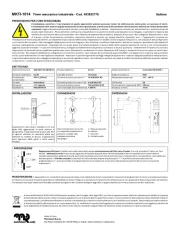
2 September 2025
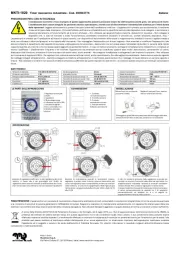
1 September 2025
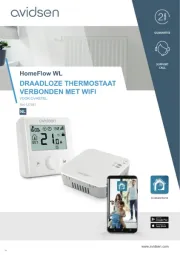
30 Augustus 2025
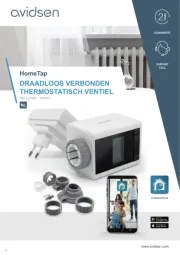
30 Augustus 2025
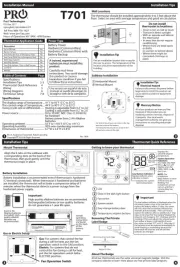
26 Augustus 2025
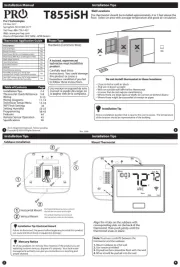
26 Augustus 2025
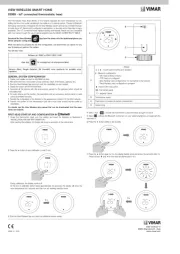
26 Augustus 2025
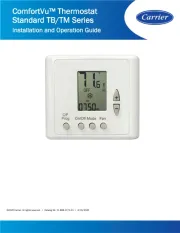
26 Augustus 2025
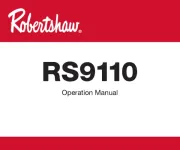
26 Augustus 2025
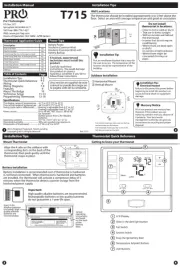
26 Augustus 2025